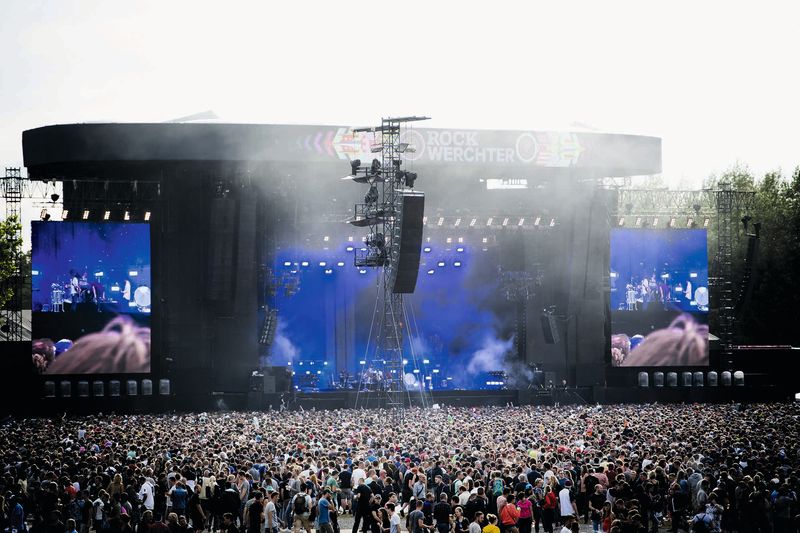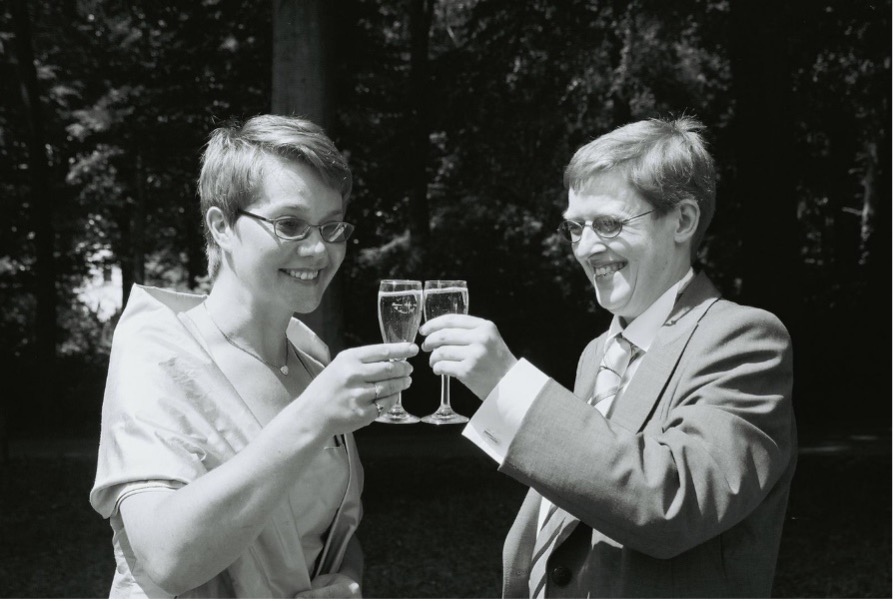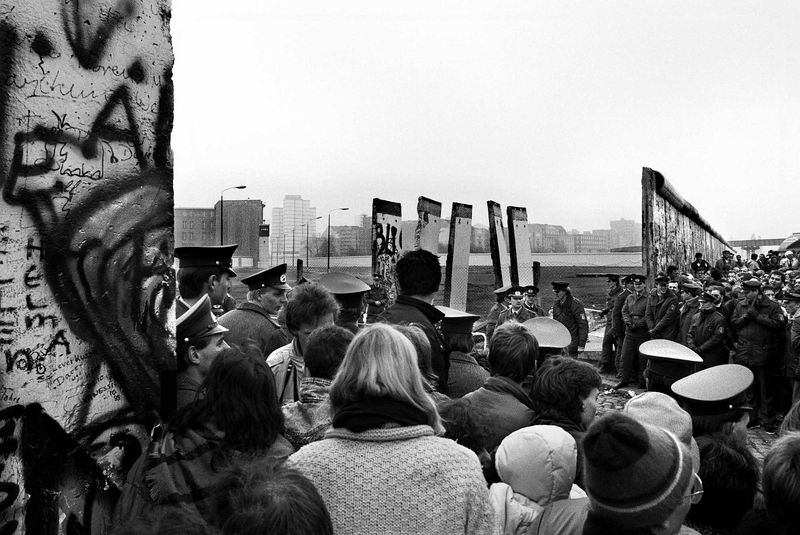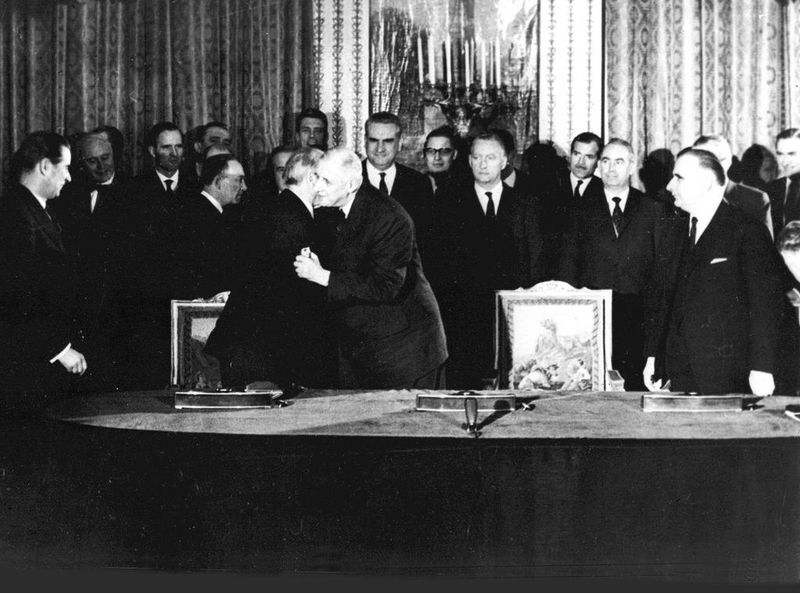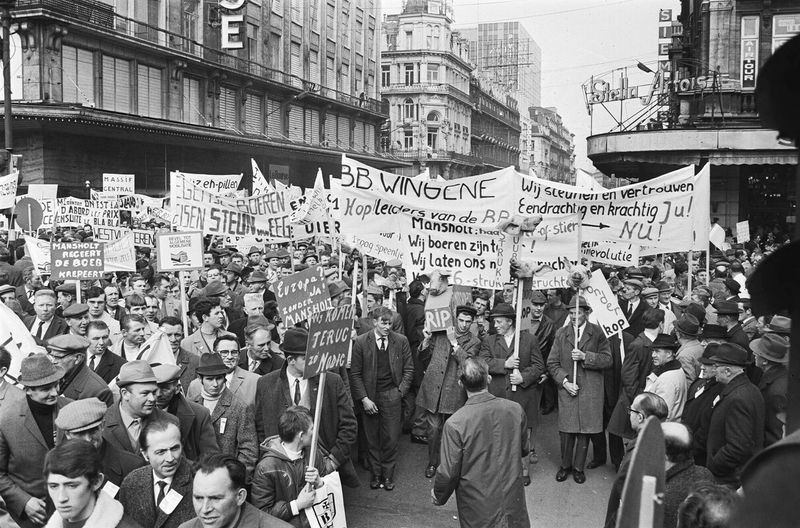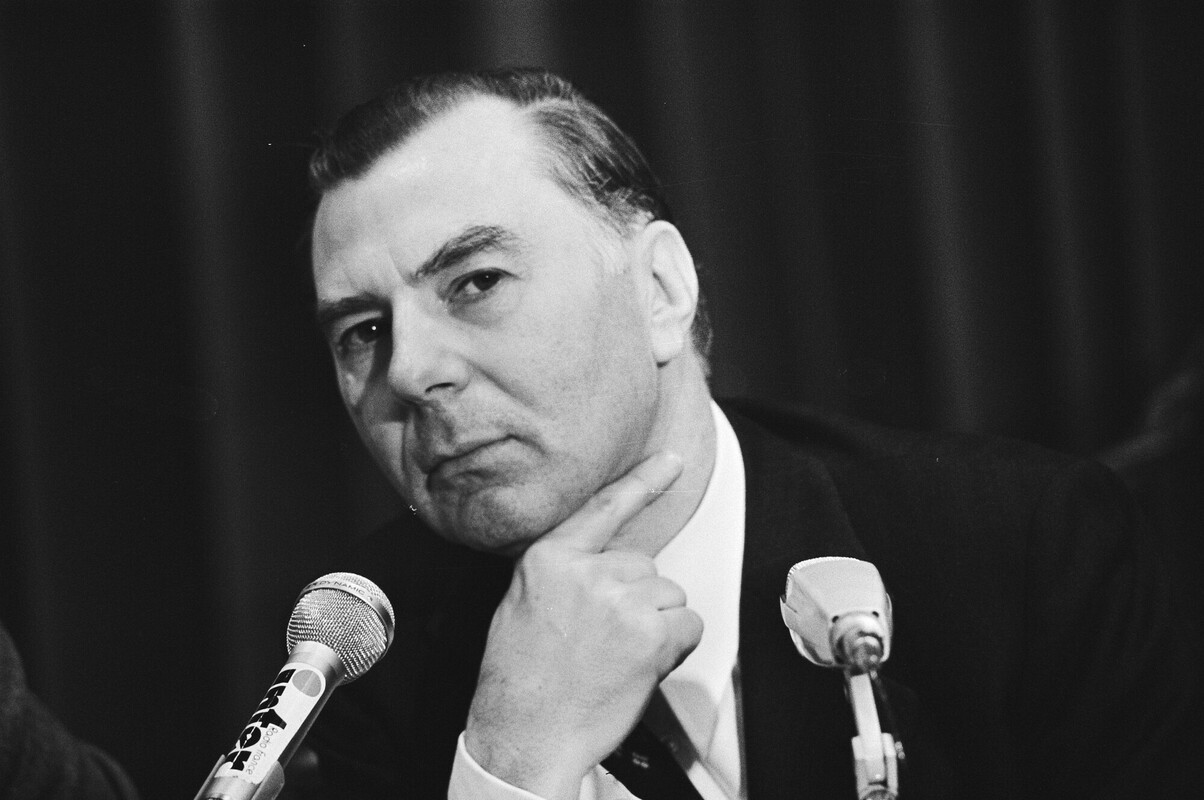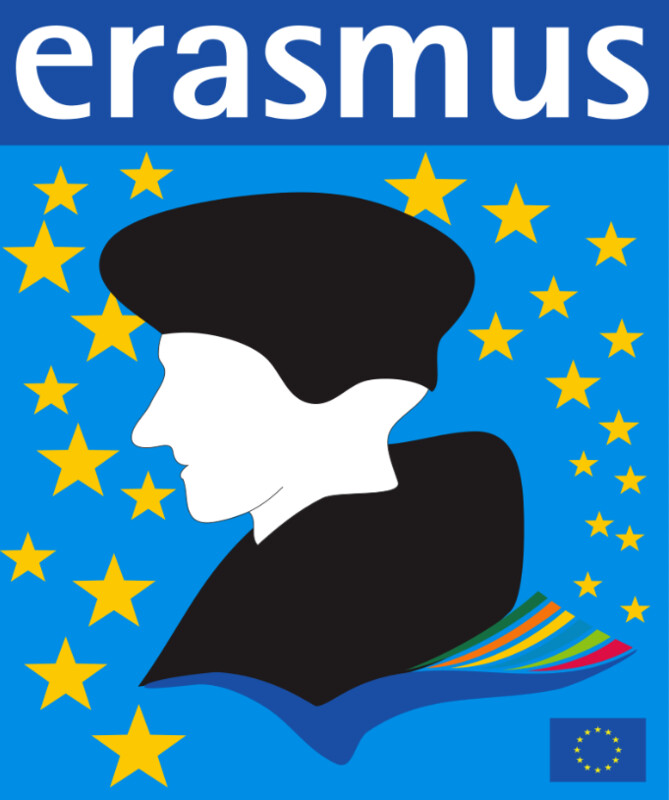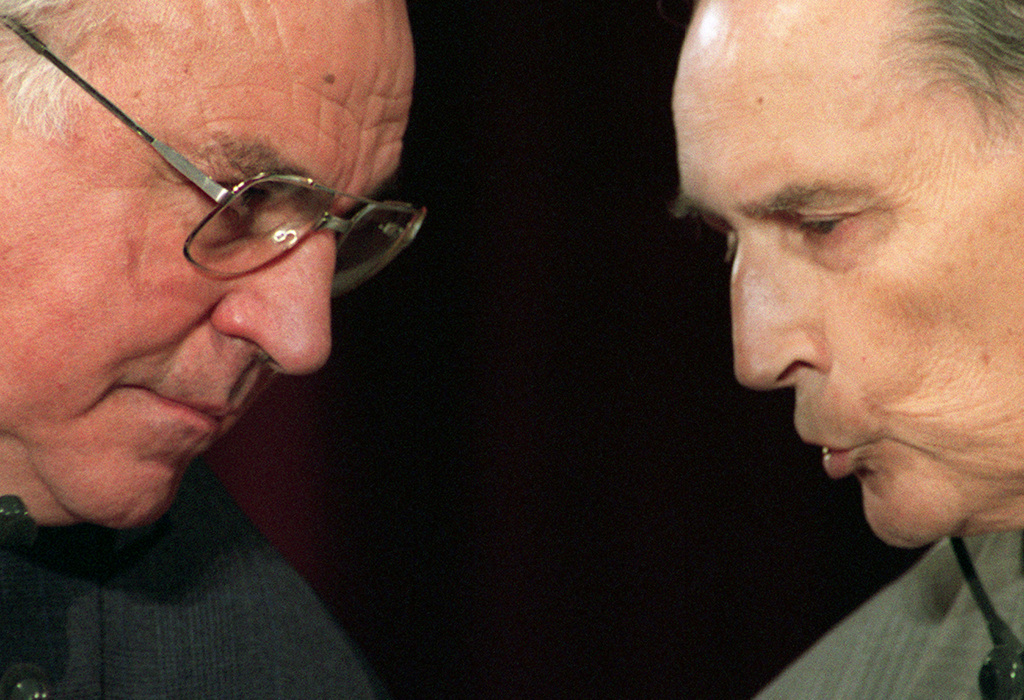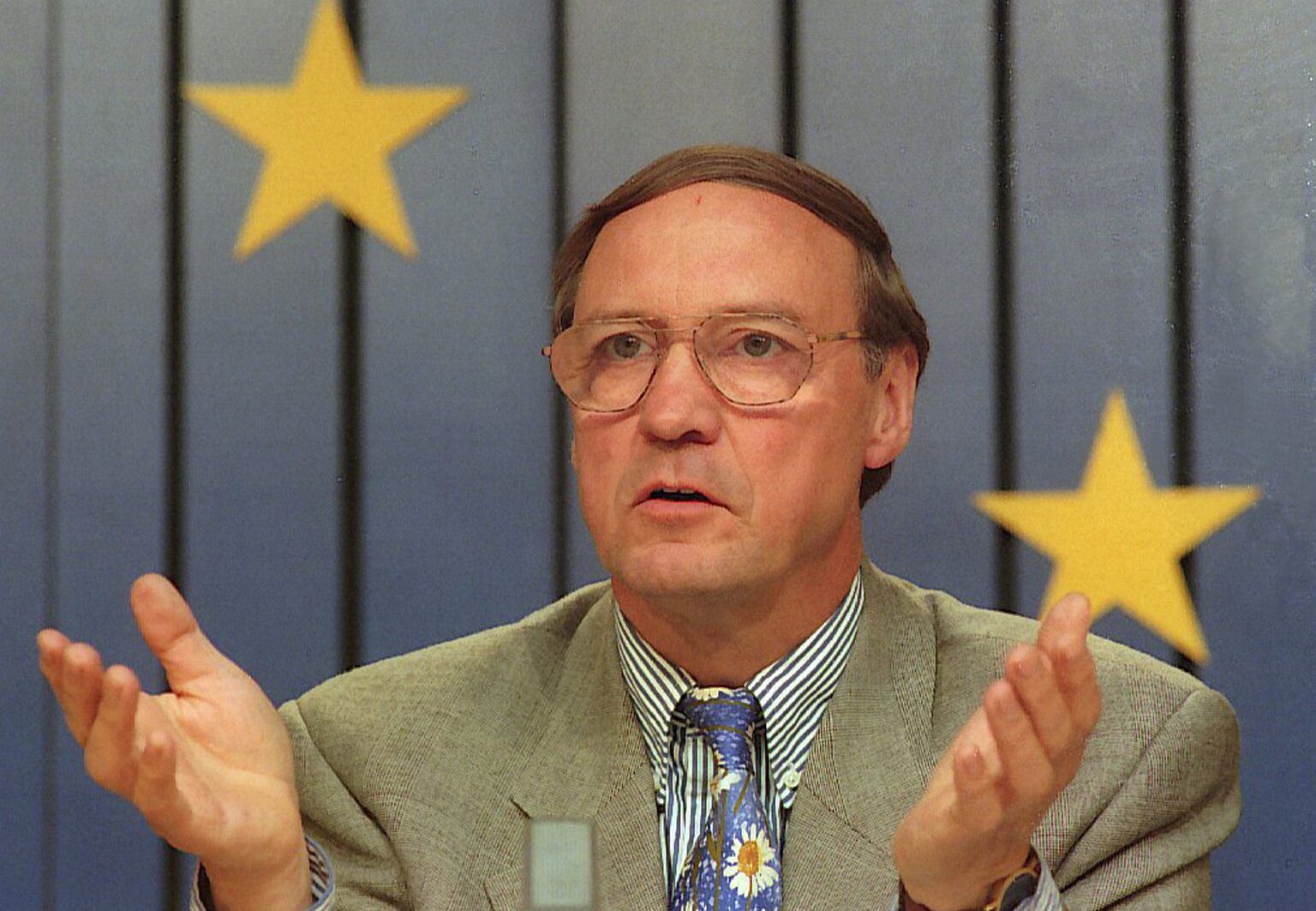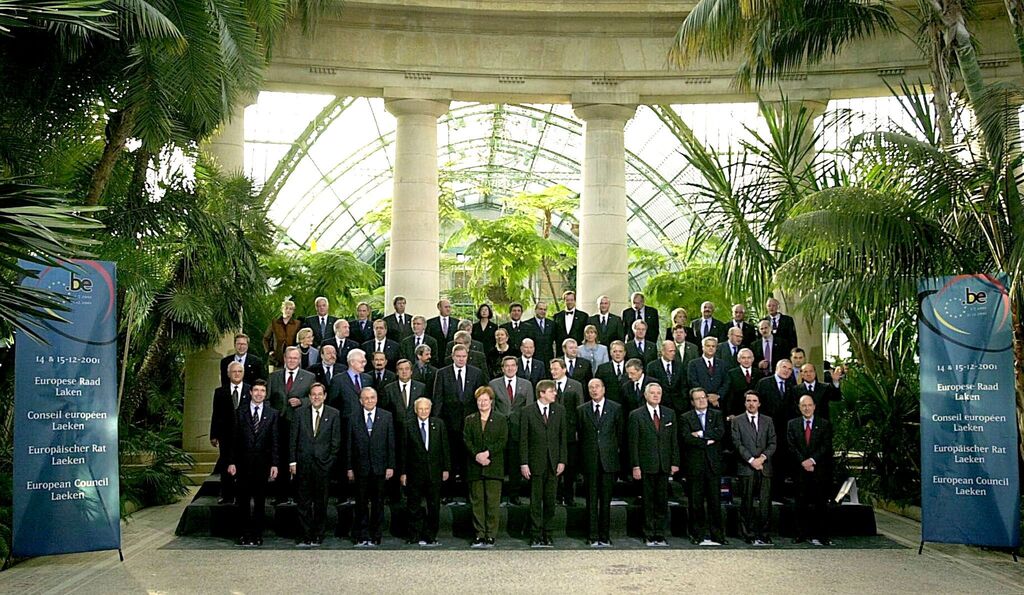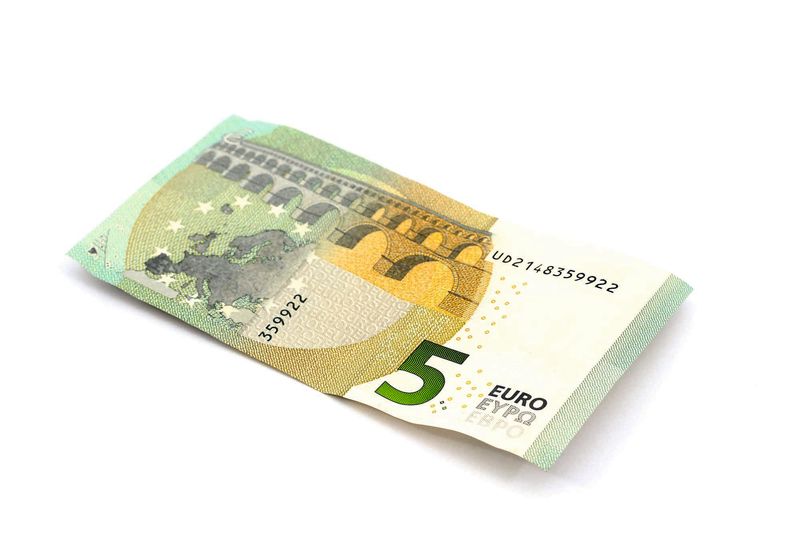
The 5-euro bank note features the depiction of a symbolic bridge. The euro bridges the differences between the member states | iStock
The Euro
European Integration
At New Year 2002, just after midnight, long queues formed at cash machines all over the country. For the first time euro notes could be withdrawn. Many people wanted to witness that historic event.
The introduction of the euro was an ambitious political project, rather than an economic necessity. It was a clear choice for ‘more Europe’, after the Cold War had ended in 1991. German chancellor Helmut Kohl abandoned the strong German mark for a European unitary currency. In exchange the French president François Mitterrand did not oppose the re-unification of East and West Germany.
In 1992 the twelve member states of the European Communities signed the Treaty of Maastricht. In so doing they founded the European Union and opened the prospect of the introduction of the euro. In 2002 the national currencies, such as the Belgian franc, disappeared. In that way the euro became the symbol of European integration. Today 20 of the 27 member states of the European Union belong to the eurozone.
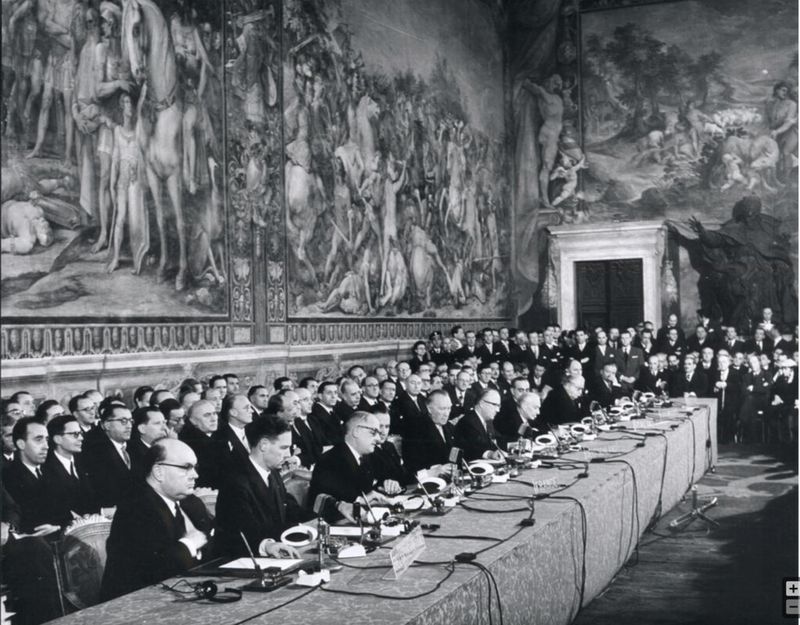
European Commission Audiovisual Library
The signing of the treaties of Rome in the Capitoline Museums on 25 March 1957. Foreign Minister Paul-Henri Spaak (front row, in front) represents Belgium.
European Integration
Western European integration started as a peace project amid the rubble of the Second World War. Belgium too, as a small country, felt an urgent necessity for greater cooperation in Europe. Further cooperation must be possible through a shared history and shared values.
Consequently, Belgium immediately supported the setting up of the European Coal and Steel Community (ECSC) in 1951. Together with the Netherlands, Luxemburg, France, Italy and West Germany Belgium wanted to make supranational agreements on heavy industry. The six countries gave up part of their national sovereignty. That was not a forgone conclusion: coal and steel were strategic raw materials for national interest and security,
In 1957 the six founder members of the ECSC went a step further in their economic cooperation. With the Treaty of Rome they set up the European Economic Community (EEC). The EEC was a customs union which was to be achieved step by step and was designed to culminate in a large free-trade zone. In 1967 the EEC merged with the ECSC and Euratom to form the European Communities, headed by a single European Commission and a Council of Ministers. The customs union evolved into a common market on the basis of the principle of free passage of persons, goods, services and capital. That development contributed to the deregulation of financial markets, compulsory privatisations and the dismantling of the public sector. Only later was the cry for a ‘social Europe’ to grow louder.
1989-1991 saw the end of the Cold War between the West led by the United States of America and the Communist world led by the Soviet Union. The fall of the Berlin Wallthe wall between East and West Berlin, built in 1961 by the communist regime in East Germany as part of the Cold War to prevent the flight of inhabitants to the West. in 1989 led a year later to the reunification of divided Germany. As a result of this European integration also took a new turn. The European Communities changed to the European Union. The number of member states gradually increased.
Focal points
Discover more on this topic
Non-fiction
Het belang van geld. Een alternatieve wereldgeschiedenis
Hollands Diep, 2019.
Europa in woelig water. Van eurocrisis tot coronacrisis
Davidsfonds, 2021.
Na de oorlog: een geschiedenis van Europa sinds 1945
Contact, 2006.
Een naoorlogse achtbaan. Europa 1950-2017
Spectrum, 2018.
In Europa. Reizen door de twintigste eeuw
Atlas, 2006.
Grote verwachtingen: in Europa 1999-2019
Atlas Contact, 2019.
De Europese Unie
Schoolsupport, 2021. (9+)
De Europese Unie in een notendop
Bert Bakker, 2011.
Waarom Europa? Kleine geschiedenis van een groot project
LannooCampus, 2022.
Europa in alle staten: Zestig jaar geschiedenis van de Europese integratie
Vantilt, 2013.
De passage naar Europa: geschiedenis van een begin
Historische Uitgeverij, 2009.
Hoe Europa ons leven beïnvloedt
Standaard Uitgeverij, 2008.
Dit is Europa. De geschiedenis van een unie
Borgerhoff & Lamberigts, 2021.
Fiction
De hoofdstad
De Arbeiderspers, 2018.
Neem bijvoorbeeld graniet: de Europese grondwet in verzen
De Bezige Bij, 2011.
